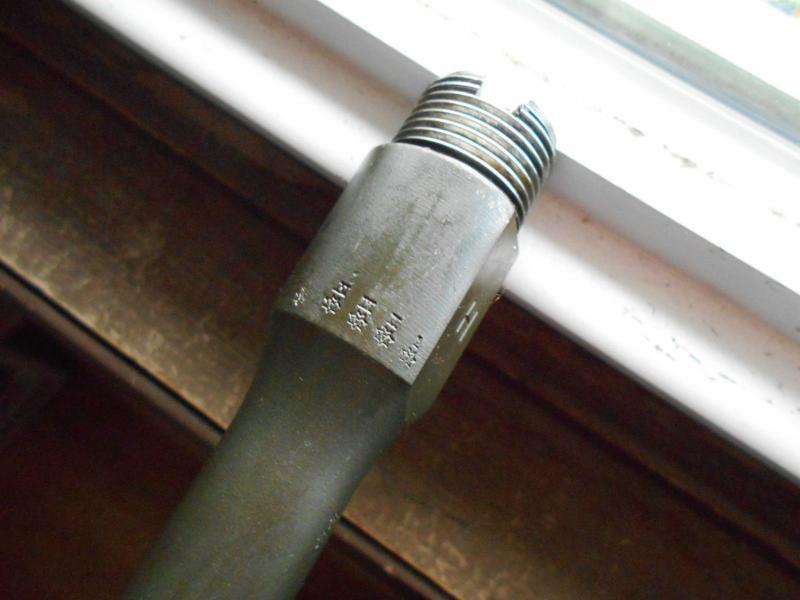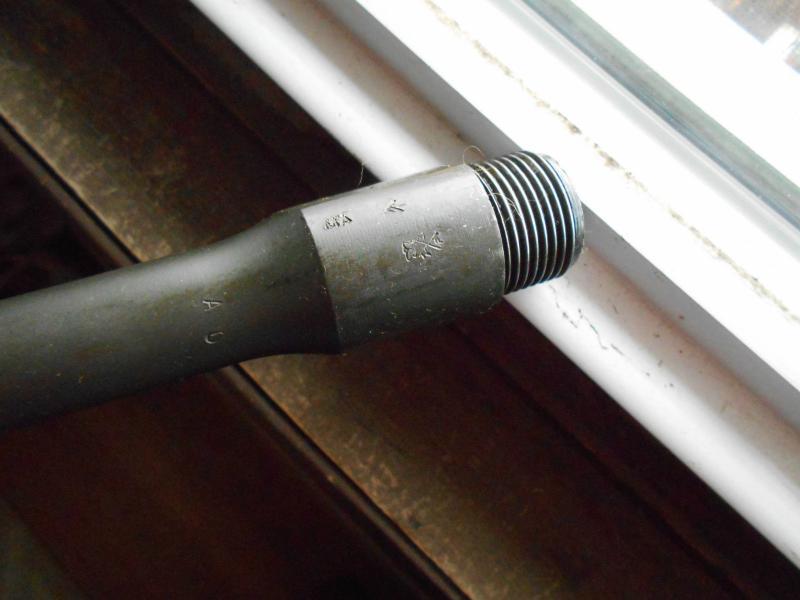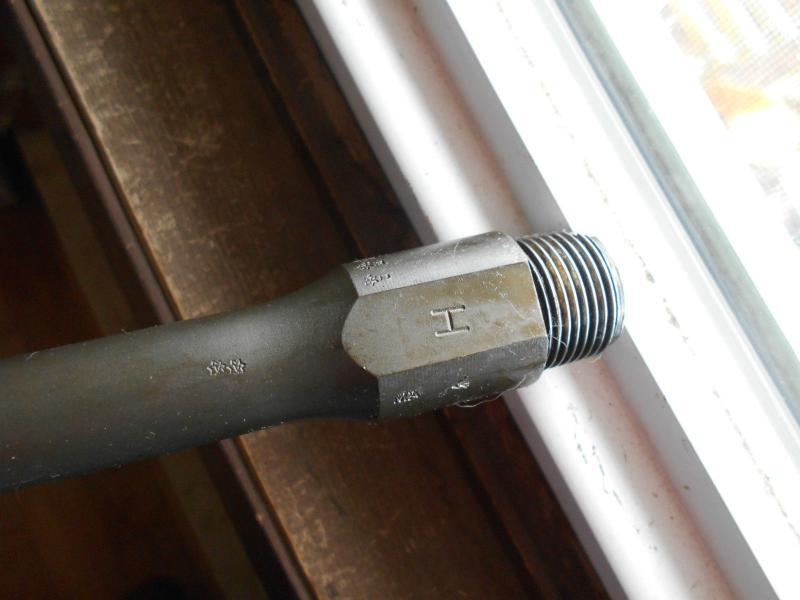-
Legacy Member

"Don't tell Demo"
I'm right here mate!
-
-
02-09-2015 11:26 PM
# ADS
Friends and Sponsors

-
Legacy Member


QUOTE=SpikeDD;323214]A single * in front of knox form or in any other area of the barrel indicates rust near that mark. Two ** on knox form indicates moderate pitting of rifling or throat. There is no reference to two ** on barrel in front of knox form..... Skennerton 's The Lee Enfield. It may possibly mean badly pitted in the area of those marks?[/QUOTE]
's The Lee Enfield. It may possibly mean badly pitted in the area of those marks?[/QUOTE]
Armourer's Wing Precis Volume II
Attachment 59941Attachment 59942Attachment 59943Attachment 59944Attachment 59945Attachment 59946[
-
The Following 2 Members Say Thank You to Cold_Zero For This Useful Post:
-
Contributing Member


If you have a heavy barrel, then it is definately a Lithgow , these barrels were not produced by any other country.
, these barrels were not produced by any other country.
Heavy barrels were produced from 1932 on, specifically for the Rifle Club Movement, but also were used in the H rifles and were fitted to Service rifles in the last years of the war, the markings on a H barrel will have a large H on the nocks, you may have the letters AJ, AV or VS in close proximetry to the stars.
You have not said if the stars match what I have pictured or if they are the rust * astericks.
-
Thank You to muffett.2008 For This Useful Post:
-
FREE MEMBER
NO Posting or PM's Allowed

-
Legacy Member

Muffer I just read your earlier post. All very interesting but barrels dated on assembly? I know its been tossed back and forward over the years but I'm not convinced on that one.
---------- Post added at 01:49 PM ---------- Previous post was at 01:48 PM ----------

Originally Posted by
Nailcreek

Yes that's a Lithgow heavy profile barrel.
heavy profile barrel.
-
-
FREE MEMBER
NO Posting or PM's Allowed

Would the two stars imply throat erosion?
-
Contributing Member


No, they are Manufacture view marks, the first stamped at completion of the fine bored stage, the second at the completion of the Rifled stage.
There are four such stamps on barrels produced and fitted while the Inspection Branch was under control of F.E Hart from 1915 to 1922. Attachment 60004These extra stamps were due to the use of parallel rifleing and a P in a heart was added to the nocks.Attachment 60011
The first four View marks around the nocks, were added at seperate stages of Manufacture, the Roman Numeral stamped under the star was added by the Inspection branch, to signify that the barrel had completed each phase successfully and was able to be mated to a receiver.Attachment 60010
( This was the responsibility of Manufacturing Inspectors until late 1915 when the Inspection branch was added to the factory.)
The receiver underwent ten such inspections (twenty on early year rifles) before the breeching up phase, after proofing and chamber final finish, the complete rifle is stamped on barrel and nocks with a Lithgow proof, Attachment 60005 and the fifth view mark is stamped by both Manufacture and Inspection branch,(Early rifles may have up to ten such stamps)Attachment 60009 After completion of sighting and final fitment, the completed rifle has a sixth mark added and the barrel, action,bolt, nosecap and forewood are stamped with a serial number and a final Inspection stamp is added to the barrel by the out Inspector.Attachment 60008Attachment 60007
proof, Attachment 60005 and the fifth view mark is stamped by both Manufacture and Inspection branch,(Early rifles may have up to ten such stamps)Attachment 60009 After completion of sighting and final fitment, the completed rifle has a sixth mark added and the barrel, action,bolt, nosecap and forewood are stamped with a serial number and a final Inspection stamp is added to the barrel by the out Inspector.Attachment 60008Attachment 60007
The barrel on rifles up to 1925 were considered to be the main component and the entire rifles history was recorded on both the front of the receiver and barrel nocks.
In the event of a barrel change the barrel was stamped as a replacement, if a receiver, the S/N was struckout and the barrel number stamped on the receiver. This process was reversed after 1925 and the Receiver became the main assembly.
Attachment 60006
So in the event of a barrel or component change post that period, all means of acurately following the history of the firearm became more difficult (not a care to the Military, they were'nt collectors) other stampings on the timber by Units and Military Districts and Factory/Workshop repair stamps and FTR's were added. (just to add to the confusion.)
If the firearm was subjected to work outside the Military stream, than all means of following it's history became rapidly blurred, unstamped and undated or old dated barrels, incorrect bolts and butts and other parts changed
-
The Following 9 Members Say Thank You to muffett.2008 For This Useful Post:
-
Legacy Member

-
-
FREE MEMBER
NO Posting or PM's Allowed


Originally Posted by
Nailcreek

Is there a reference available detailing armourer inspection marks? If a barrel has two star stamps in front of the knocks form, is that evidence of an issue?
In addition to the great advice provided by the above posts by the great Milsurps "league of experts," be sure to see:
Lee Enfield Rifle Markings
BTW, thanks to all you contributors for the advice. I just bought a 1918 Lithgow yesterday on GB (Australian Enfield Lithgow SHT.LE MK III 1918 .303 : Bolt Action Rifles at GunBroker.com ) (my first Lithgow) and will be applying your wisdom to this gun too. Thanks for continually reaffirming the old adage: "Sharing Expands, Hording Contracts" in expanding the knowledge about these historic masterpieces.
Robert














 PM
PM














